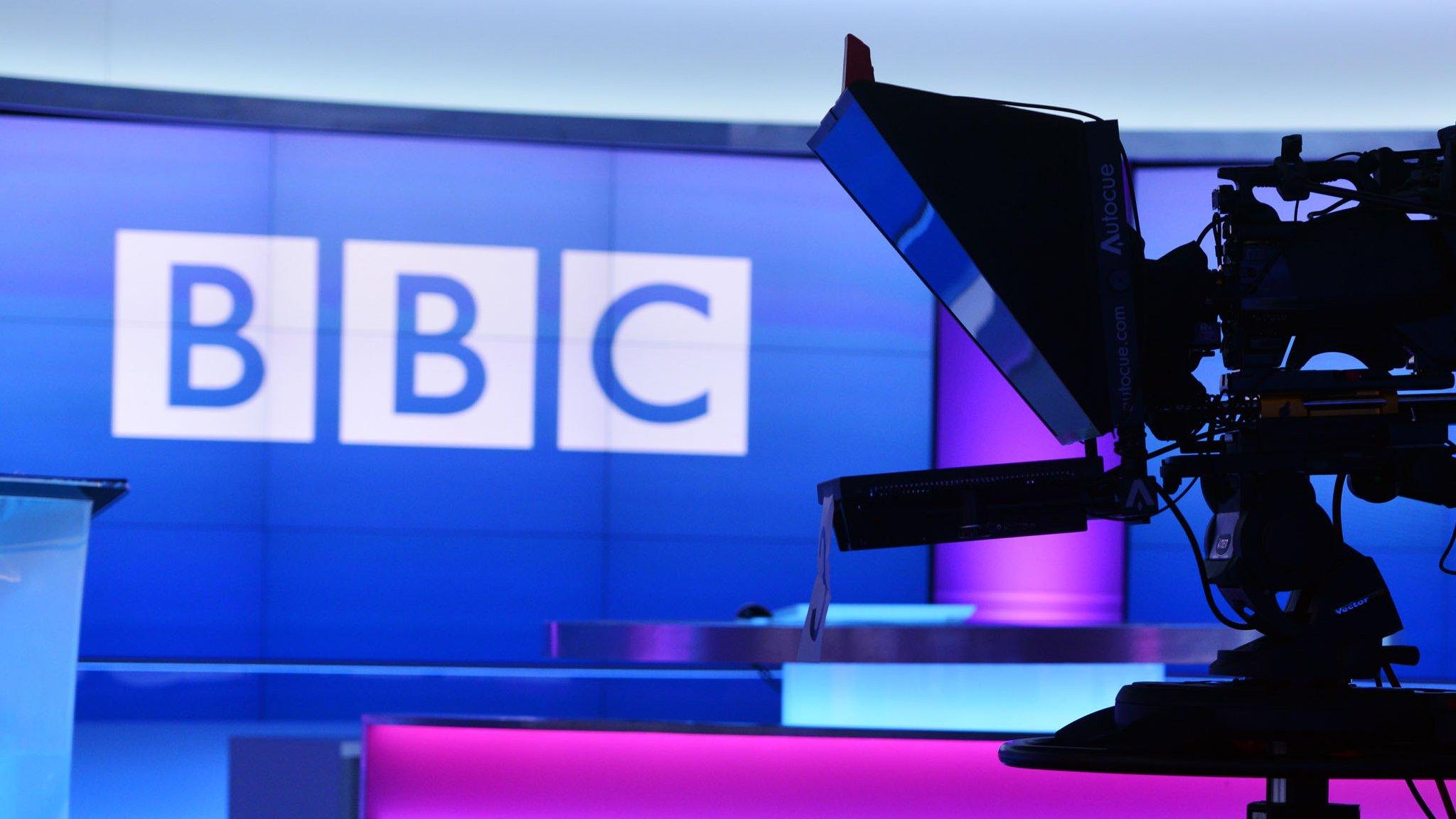STV boss upbeat about future as more viewers choose on-demand
- Published
The battle to win TV viewers has never been as tough, or as expensive. Apple is now joining the fray. Other US giants of entertainment will soon launch their own platforms, along with a joint venture by BBC and ITV.
How does STV survive in such tough competition? With more prominence for its catch-up STV Player, through Sky and Virgin Media.
Its chief executive is upbeat, about winning drama commissions to be broadcast by rivals, and about its news viewing figures.
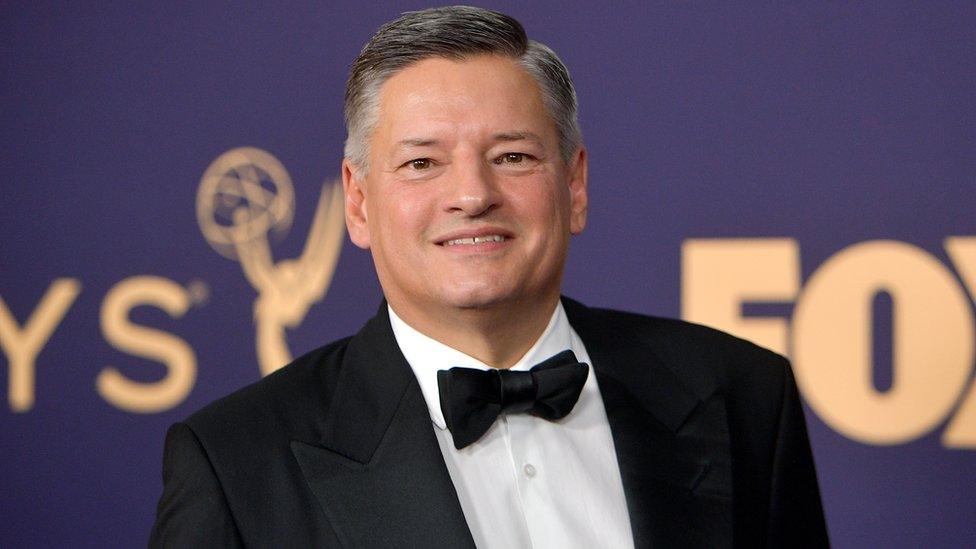
Netflix chief Ted Sarandos helped change the way we consume progammes
Seven years ago, I interviewed an American who had come to the Edinburgh Television Festival to talk about his launch of a new type of TV service in the UK market.
The firm represented by Ted Sarandos clearly had deep pockets and was willing to spend big money on drama series. That started with an American adaptation of House of Cards, a British political novel made into a BBC drama, and given a dark twist by Kevin Spacey.
What then caught the ear of Radio Scotland listeners was when Mr Sarandos explained the novel approach of putting all the episodes on-stream at once.
How would that work, we wondered? Watching all your favourite programmes in one sitting? Surely not.
The company was called Netflix. The lesson? How fast things can change in the media market.
Britbox
By last year, only six years after that launch, Netflix reached into a third of Scottish homes. It's a fair assumption that things will continue to change at a blistering pace.
Apple has been slow to the TV party, but joins it this week with a platform which, the tech giant hopes, will repeat its success at providing customers with a design-tastic and intuitive route into media, including new web series and movies.
BBC and ITV are in a joint venture which will soon see the launch of BritBox, priced around £6 per month, offering the two broadcasters' vast archives and some original content.
Disney is soon to launch its own rival service in the US, and soon after in the UK, for which it has removed many of its programmes and films from Amazon Prime and Netflix. WarnerMedia intends to launch the HBO Max service next spring, with a different stable of content.
Such technology giants are throwing colossal amounts of money around, in a battle to gain dominance, subscribers, market share, recognition and the biggest stars of the small screen. To recruit subscribers, they have to dig very deep to provide compelling content.

The Crown is soon to launch a further season on Netflix. HBO has been toying with a prequel to Game of Thrones. The BBC can dominate real-time broadcasting figures in the UK, but its budget is stretched to compete on content. The forthcoming His Dark Materials, adapting the Philip Pullman novels, is a collaboration with American programme-maker HBO.
Collaboration is a feature of the developing market, including those within the BBC. Guilt is a dark comedy drama, winning critical acclaim. It was made by two independent production companies; Happy Tramp North, based in Inverness, and Expectation in west London. It was commissioned for the BBC Scotland channel - the one launched last February - and for BBC2. It got a government-funded Scottish Screen grant, and is intended for international distribution through BBC Studios.
With a flood of US imports, the quality of the drama makes this a golden age for TV viewers. It's also making a noticeable impact on Britain's economic output. TV and film-making gave a much-needed lift to the most recent figures for Gross Domestic Product.
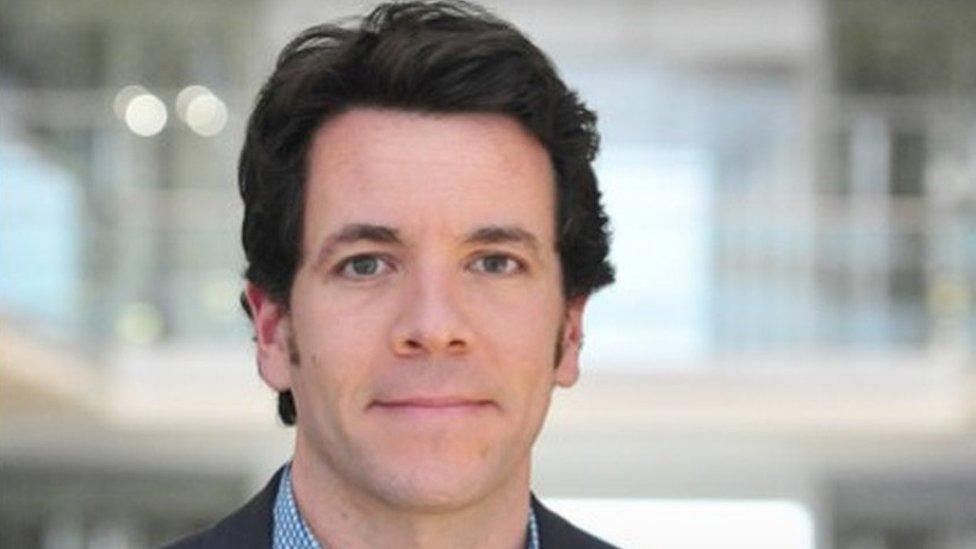
Simon Pitts spent 17 years at ITV before taking over at STV
So how is a small TV station in Scotland getting on? At risk of being squashed? Simon Pitts, nearly two years into his tenure as chief executive of STV, is undaunted. Indeed, he is upbeat.
Friday sees the start of the STV catch-up service on the Sky platform. As Sky has around 800,000 subscribers in Scotland, it's important to make it easy for them to access the library of STV programmes as easily as possible. That was introduced last October for those with Virgin Media subscriptions.
Crucially, viewers no longer have to go through ITV to get at them. STV gets the credit with advertisers, and captures valuable data.
By last year, half of Scottish households were using such video-on-demand services, according to Ofcom's annual report on media use. Netflix led with 32%, BBC's iPlayer was on 28%, Amazon on 22% and STV Player on only 11%. Having a prominent presence on the Sky platform, as well as Virgin Media, should help grow that STV share.
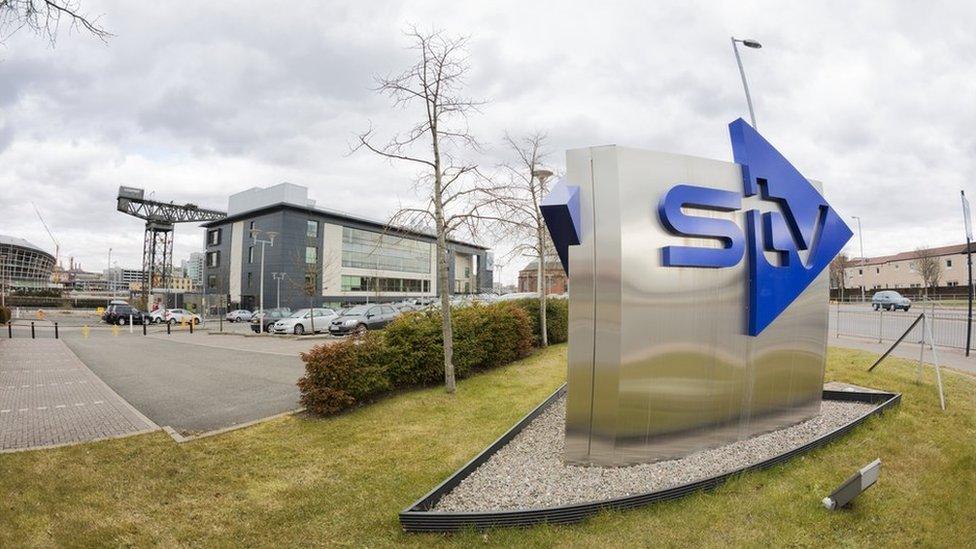
What can viewers watch? Not the STV2 station that Pitts axed soon after he arrived at the Clydeside offices of STV. It wasn't making commercial sense, having failed to attract the audiences needed, and without sufficient investment to turn that around. It had been a strange hybrid anyway, having grown out of an unsuccessful UK Government policy of opening up city-based TV stations.
Pitts attracted early notoriety by getting rid of 56 journalists. The argument was that this should release money to invest in new programming. STV has long been searching for a replacement for the murder series Taggart.
As drama has become very very expensive, it wants to make money through repeat commissions for game shows. Last week, it landed the fourth series of Celebrity Catchphrase for ITV. Antiques Road Trip is a repeat earner, made for the BBC.
And although the BBC is a rival broadcaster, competing for audiences, it is also a key part of STV's strategy to survive and thrive in the fast-changing TV market. STV made the high-cost crime thriller The Victim for BBC network, and it won critical acclaim.
Its production division, which this year took over Primal Media production house, has just finished making Elizabeth is Missing. That is also for BBC broadcast in the next few months. It's an adaptation of Emma Healey's novel, starring Glenda Jackson and filmed this summer in Edinburgh.
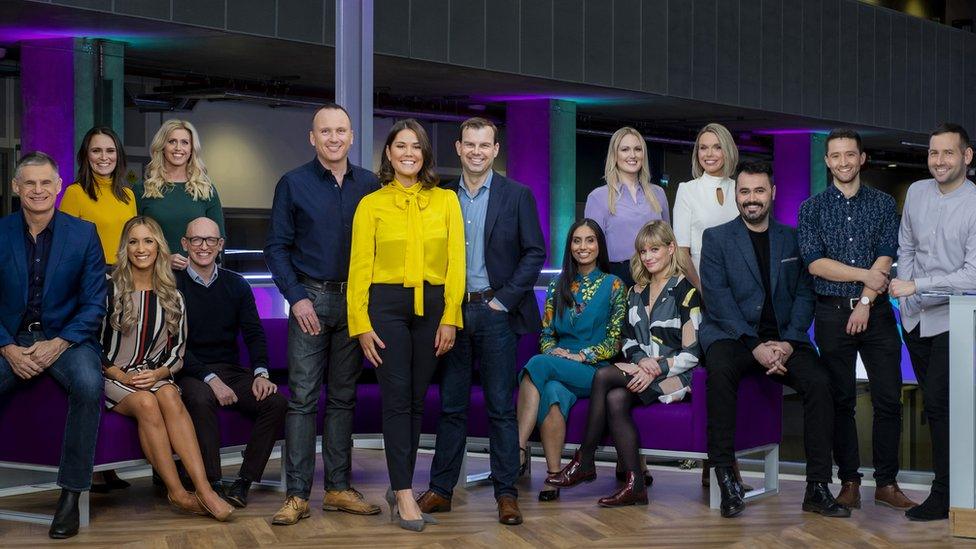
The Nine was launched in February on the new BBC Scotland channel
Ratings for its 18:00 news programme - co-presented from Glasgow and Edinburgh - are another credit for the Pitts regime, having overtaken the BBC's Reporting Scotland during last year.
This gets close to home for me, obviously. So while keeping that in mind, why has it happened? You could argue it reflects the quality of the programmes. That's a subjective view, which I don't hold.
There is clear evidence of changing viewing habits, particularly among young viewers, who are tuning out of live broadcast in favour of their own choices, and it seems the BBC has lost young audiences at a faster rate. The need to reach younger audiences was emphasised by an Ofcom report this week.
BBC executives also point to the effect of a legacy audience from the preceding half hour. STV News at Six takes over from The Chase quiz show with Bradley Walsh, which tends to outperform Pointless on BBC1.
Younger viewers
Moreover, Reporting Scotland takes over at 18:30 from BBC network news from London. Some people tune in for news about Scotland. Others may think they've had enough of Brexit for one evening, and switch over, or off.
The competition for Scottish viewers has heated up this year, with the BBC Scotland digital channel, including The Nine news hour. It's been well received by those who watch, but has been criticised for relatively small audiences.
The explanation from the BBC at Pacific Quay is that the figures meet the expectations approved by Ofcom when the channel was launched. It is the most watched channel after the big five at the top of the Electronic Programme Guide and demand for catch-up of content made by BBC Scotland has doubled in the past year.
That is the direction of travel for viewers - away from linear stations and the schedulers' choices, and towards catch-up, as well as alternative on-screen attractions from games to social media.
Keeping pace with such change is clearly a big challenge for broadcasters. STV hopes that being nimble, and mixing broadcast with content for the bigger players, is the way to do so.
*It's been pointed out that I omitted to mention the STV North news programme, broadcast from Aberdeen. I have now.
And before it's pointed out from more southerly quarters, ITV Border provides the evening news and other Channel 3 programming for the south of Scotland.
- Published31 October 2019
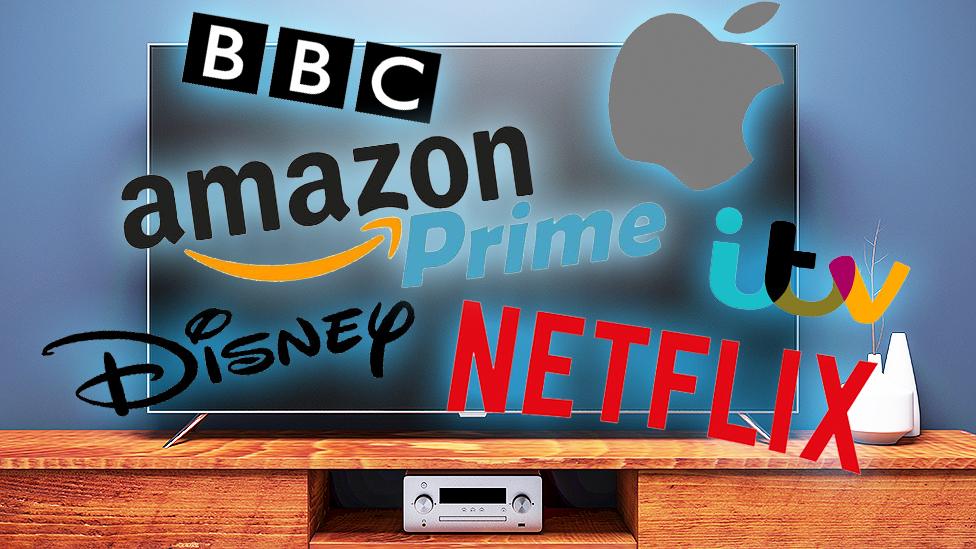
- Published24 October 2019
